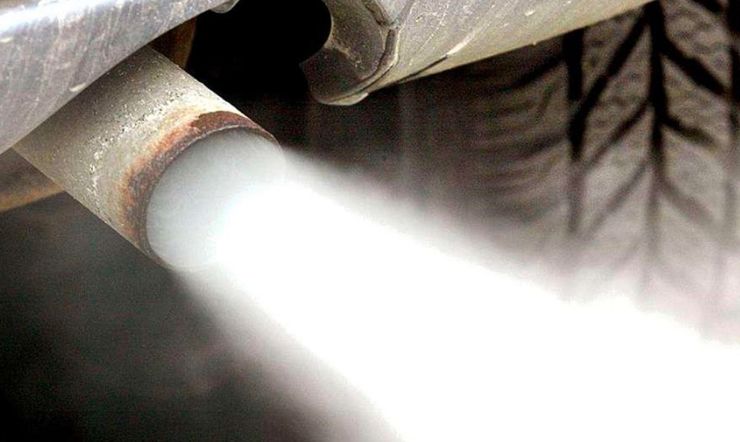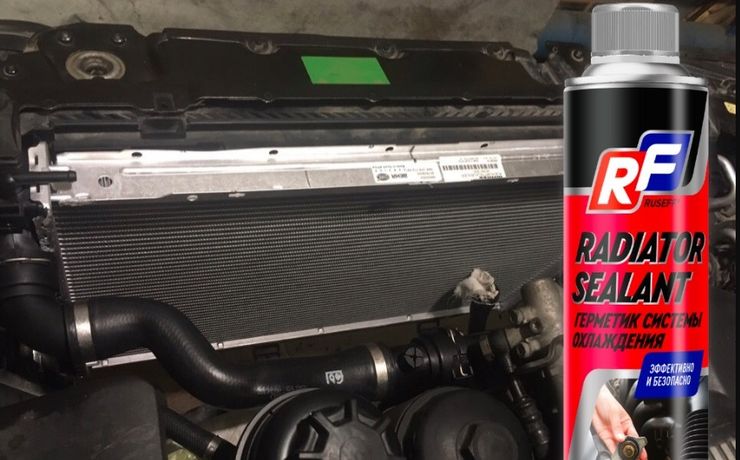Quickly seal a hole with leaking antifreeze in a car radiator
- February 2, 2023
- 0
When operating the machine, it is very important to ensure that the required amount of antifreeze is always present in the engine cooling system. But this fluid, as
When operating the machine, it is very important to ensure that the required amount of antifreeze is always present in the engine cooling system. But this fluid, as

According to consumer market experts, the majority of cars in the Russian passenger car fleet today are three years old or more, and the average age of a used car has long been above the top ten. Moreover, the observed trend of accelerated aging of the fleet will continue in the coming years.
This means that for many “used” machines, the wear and tear of individual components and systems will approach a critical point. The latter is especially important to consider when servicing the engine cooling system, where even a small depressurization or leakage of coolant can quickly cause overheating and even engine failure.
Experts note that most often such defects in the cooling system have pronounced symptoms, to which drivers (especially novices) do not respond in any way. By the way, there are a lot of such signs. For example, this can be frequent drops in the level of liquid in the expansion tank, the appearance of incomprehensible puddles under the car or the smell of “chemistry” in the cabin, multi-colored drops on the radiator, prolonged noise from the fan under the hood …
However, the worst signs are steam under the expansion tank cap or dense white smoke from the exhaust pipe. They should especially warn the car owner. After all, the white color of smoke very often indicates the most insidious variant of depressurization of the cooling system, which is the appearance of microcracks in the cylinder head.
The antifreeze that flows out and enters the combustion chamber can, with a high degree of probability, cause water hammer in the cylinders. The result is a major overhaul with a complete engine overhaul and very high costs.
It is clear that the problems listed above can be completely eliminated if you properly maintain the car and regularly check the condition of the main elements of the cooling system. These are, first of all, a radiator, intake pipes, an expansion tank, rubber hoses, temperature sensors. And, of course, you should react immediately to the first signs of possible coolant leaks. It will not be superfluous to have “first aid” tools in the car, which are indispensable when detecting a breakdown, especially if it happened on the road.
First of all, we are talking about automotive chemicals that allow the driver to carry out emergency sealing of the cooling system himself and, importantly, directly on the road. For these purposes, various fast-acting formulations are offered in car dealerships. They are produced by both foreign and domestic companies, and the latter often surpass imported analogues in their working characteristics.
As an illustrative example, we can cite the composition of a new generation, created by chemists from the Russian company Ruseff. This product is a liquid polymer sealant that allows you to quickly make emergency repairs to damaged elements of the cooling system and the associated heating circuit in the cabin.
The basis of the product is a special water-soluble component, which forms a highly elastic polymer “patch” on contact with air at the site of a leak. As the experience of using the new Ruseff sealant has shown, it is able to eliminate antifreeze leakage from holes up to 2 mm in diameter in a matter of minutes. The repair preparation itself is packaged in metal bottles with a capacity of 280 ml. This is more than enough to quickly seal the engine cooling system of a passenger car, SUV or van.


According to consumer market experts, the majority of cars in the Russian passenger car fleet today are three years old or more, and the average age of a used car has long been above the top ten. Moreover, the observed trend of accelerated aging of the fleet will continue in the coming years.
This means that for many “used” machines, the wear and tear of individual components and systems will approach a critical point. The latter is especially important to consider when servicing the engine cooling system, where even a small depressurization or leakage of coolant can quickly cause overheating and even engine failure.
Experts note that most often such defects in the cooling system have pronounced symptoms, to which drivers (especially novices) do not respond in any way. By the way, there are a lot of such signs. For example, this can be frequent drops in the level of liquid in the expansion tank, the appearance of incomprehensible puddles under the car or the smell of “chemistry” in the cabin, multi-colored drops on the radiator, prolonged noise from the fan under the hood …
However, the worst signs are steam under the expansion tank cap or dense white smoke from the exhaust pipe. They should especially warn the car owner. After all, the white color of smoke very often indicates the most insidious variant of depressurization of the cooling system, which is the appearance of microcracks in the cylinder head.
The antifreeze that flows out and enters the combustion chamber can most likely cause water hammer in the cylinders. The result is a major overhaul with a complete engine overhaul and very high costs.
It is clear that the problems listed above can be completely eliminated if you properly maintain the car and regularly check the condition of the main elements of the cooling system. These are, first of all, a radiator, intake pipes, an expansion tank, rubber hoses, temperature sensors. And, of course, you should react immediately to the first signs of possible coolant leaks. It will not be superfluous to have “first aid” tools in the car, which are indispensable when detecting a breakdown, especially if it happened on the road.
First of all, we are talking about automotive chemicals that allow the driver to carry out emergency sealing of the cooling system himself and, importantly, directly on the road. For these purposes, various fast-acting formulations are offered in car dealerships. They are produced by both foreign and domestic companies, and the latter often surpass imported analogues in their working characteristics.
As an illustrative example, we can cite the composition of a new generation, created by chemists from the Russian company Ruseff. This product is a liquid polymer sealant that allows you to quickly make emergency repairs to damaged elements of the cooling system and the associated heating circuit in the cabin.
The basis of the product is a special water-soluble component, which forms a highly elastic polymer “patch” on contact with air at the site of a leak. As the experience of using the new Ruseff sealant has shown, it is able to eliminate antifreeze leakage from holes up to 2 mm in diameter in a matter of minutes. The repair preparation itself is packaged in metal bottles with a capacity of 280 ml. This is more than enough to quickly seal the engine cooling system of a passenger car, SUV or van.
Source: Avto Vzglyad
Donald Salinas is an experienced automobile journalist and writer for Div Bracket. He brings his readers the latest news and developments from the world of automobiles, offering a unique and knowledgeable perspective on the latest trends and innovations in the automotive industry.